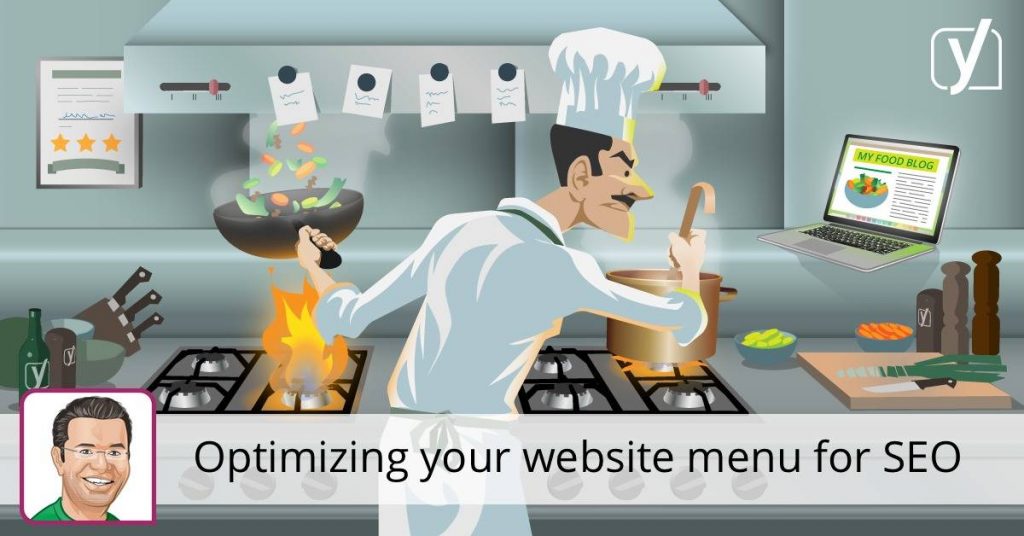In an ideal world, every single page of your website would be accessible from that one, site-wide website menu. But as you, as a web developer or website owner, undoubtedly know, the real world of websites is far from ideal. We struggle with multiple devices, fixed-width websites, themes that can hardly be changed without creating new problems, and so on and so forth. Nevertheless, the website menu is the most common aid for navigation on your website and you want to make the best possible use of it. Here, I’ll address a number of useful best practices that allow you to optimize your website menu for both your users and SEO.
Website menus
First of all, I think we should forget the assumption that a website can only have one menu. I think we have become used to the small links in the upper bar on a website.

Like so many other websites, Greenday.com has a first menu in the black bar, whereas the red bar also contains a number of links to internal or external pages. Social profiles, Apple Music and Spotify links, but also a newsletter subscription.

Manhattan College has a clear second menu leading to internal pages, aimed at specific audiences. It just goes to show that these extra menus are everywhere.
My point here? Don’t put everything in one menu. Doing that clutters your website and makes your main menu a poor reflection of your site structure. Focus on the most important content. For instance: I do like a ‘Contact’ link in a menu. But only add one if your main goal is that your visitors contact you. Otherwise, that link can be placed in a second website menu without a problem.
The downsides of too many links in your website menu
Too many links, anywhere on your page, isn’t recommended. Yes, Google may allow up to 250 links and perhaps even more on a page without any problems. But your website’s goal’s probably not to make sure your visitors can’t see the wood for the trees. We recommend against:
- Tag clouds (what’s the use, really?)
- Long lists of monthly links to your blog archive (don’t use date archives!)
- Infinitely scrollable archive pages with links to articles (at least add excerpts and load more articles on scroll)
- A hundred categories in a list (why so many!)
- Menus with submenus and sub-submenus and so on
Why do we recommend against this? Having too many links on a page messes up your link value, for one. With so many links on a page, every link from that page is just a little less valuable for the page it links to. Besides that, it messes up the focus of your visitor. With every link, you add a diversion from the main goal of your website.
In my opinion, you do need to have a solid reason to add more than one submenu. And if you feel you need that extra level in your menu, monitor the number of clicks that menu gets and adjust if needed. I think you are much better off creating good landing pages for your submenu items, in many cases.
Read more: ‘How to clean up your site structure’ »
The perfect menu
Of course, there is no template for ‘the perfect menu’. Much of it depends on your site and on what your goals are. In any case, there are two important questions you should ask yourself when optimizing your menu:
- What is the best menu structure for my site?
- What menu items should at least be in my menu?
Two more tips we can give you is to use a drop-down menu for important sub items. And don’t add too many links to your menu, or they will lose their value. Do you have other tips for a good site menu? Let us know in the comments!
